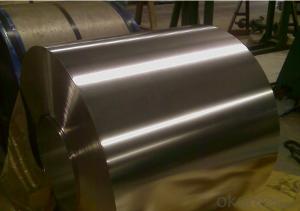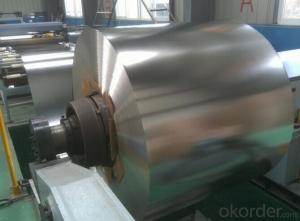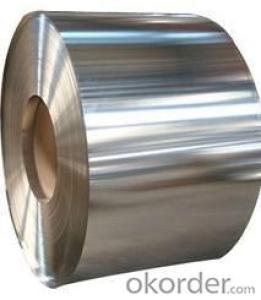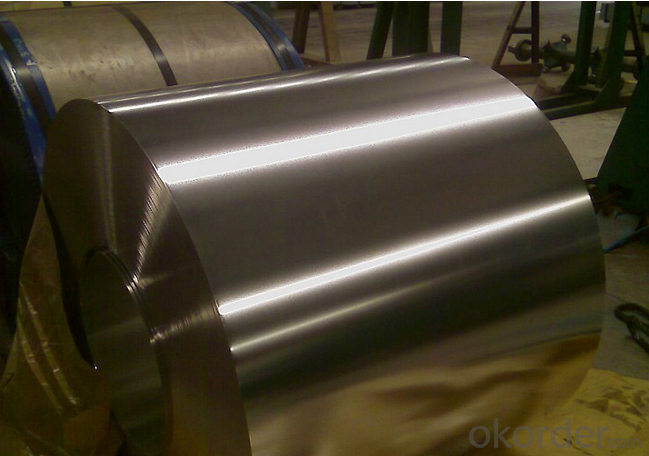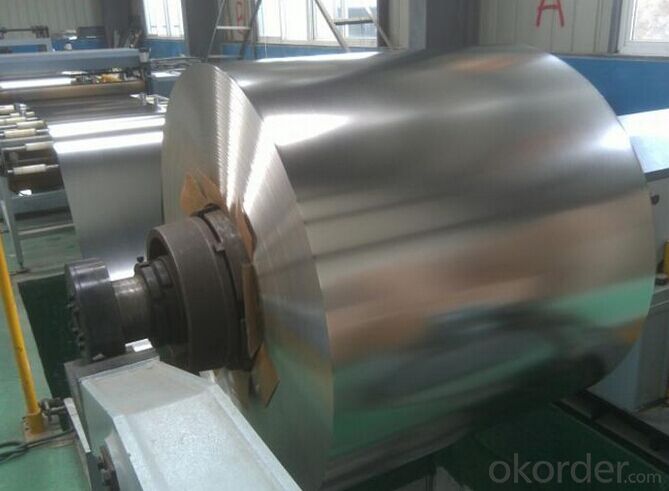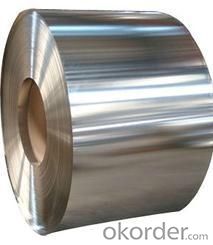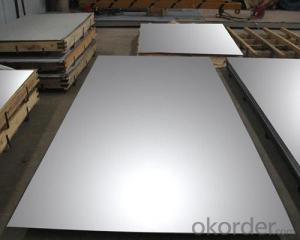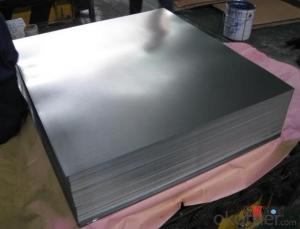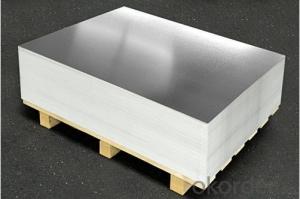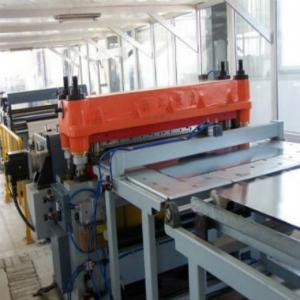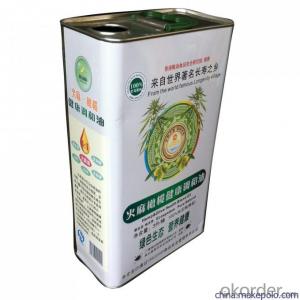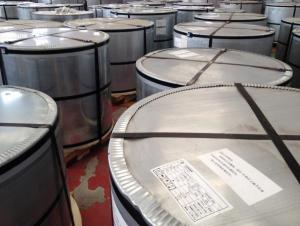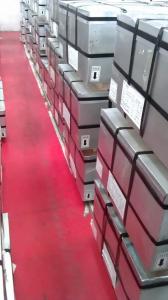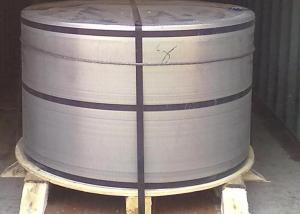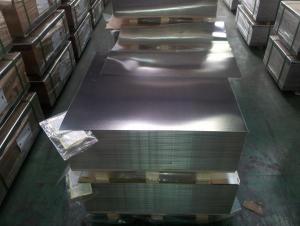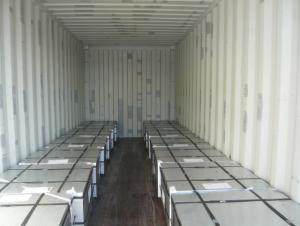Electrolytic Tinplate for Foods Can Packaging
- Loading Port:
- Tianjin
- Payment Terms:
- TT OR LC
- Min Order Qty:
- 25 m.t
- Supply Capability:
- 7000 m.t/month
OKorder Service Pledge
OKorder Financial Service
You Might Also Like
1.Structure of Electrolytic Tin Plate Coils and Sheets for Foods Metal Packaging Description
Electrolytic Tin Plate Coils and Sheets for Foods Metal Packaging, is one thin steel sheet with a coating of tin applied by electrolytic deposition. Tinplate made by this process is essentially a sandwich in which the central core is strip steel. This core is cleaned in a pickling solution and then fed through tanks containing electrolyte, where tin is deposited on both sides. As the strip passes between high-frequency electric induction coils, it is heated so that the tin coating melts and flows to form a lustrous coat.
2.Main Features of the Electrolytic Tin Plate Coils and Sheets for Foods Metal Packaging
Appearance – Electrolytic Tin Plate is characterized by its beautiful metallic luster. Products with various kinds of surface roughness are produced by selecting the surface finish of the substrate steel sheet.
Paintability and printability – Electrolytic Tin Plates have excellent paintability and printability. Printing is beautifully finished using various lacquers and inks.
Formability and strength – Electrolytic Tin Plates have got very good formability and strength. By selecting a proper temper grade, appropriate formability is obtained for different applications as well as the required strength after forming.
Corrosion resistance – Tinplate has got good corrosion resistance. By selecting a proper coating weight, appropriate corrosion resistance is obtained against container contents. Coated items should meet 24 hour 5 % salt spray requirement.
Solderability and weldability – Electrolytic Tin Plates can be joined both by soldering or welding. These properties of tinplate are used for making various types of cans.
Hygienic – Tin coating provides good and non toxic barrier properties to protect food products from impurities, bacteria, moisture, light and odours.
Safe – Tinplate being low weight and high strength makes food cans easy to ship and transport.
Eco friendly – Tinplate offers 100 % recyclability.
Tin is not good for low temperature applications since it changes structure and loses adhesion when exposed to temperatures below – 40 deg C.
3.Electrolytic Tin Plate Coils and Sheets for Foods Metal Packaging Images
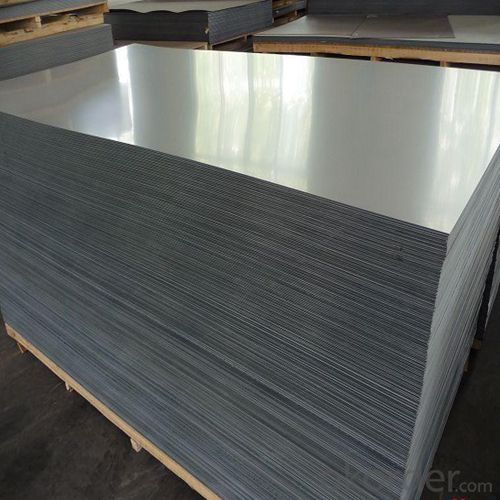
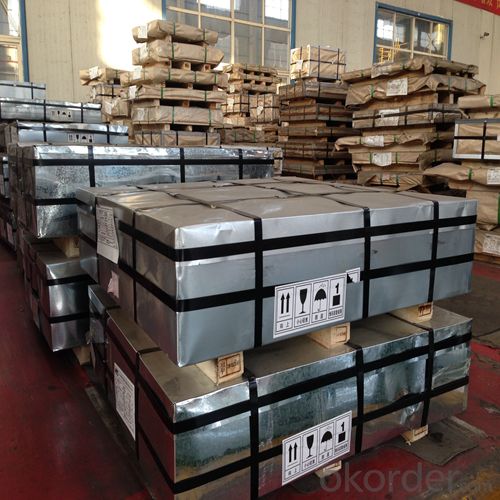
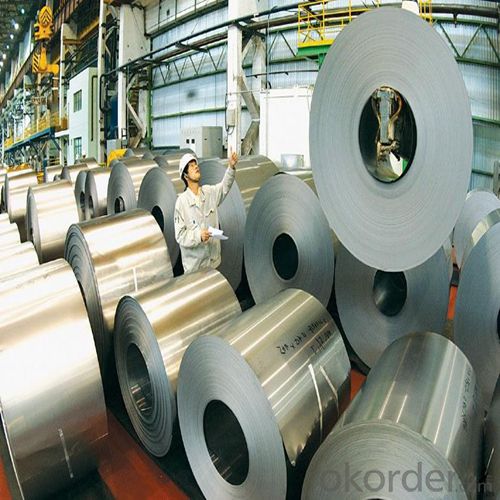
4.Electrolytic Tin Plate Coils and Sheets for Foods Metal Packaging Specification
Standard | ISO 11949 -1995, GB/T2520-2000,JIS G3303,ASTM A623, BS EN 10202
|
Material | MR,SPCC |
Thickness | 0.15mm - 0.50mm |
Width | 600mm -1150mm |
Temper | T1-T5 |
Annealing | BA & CA |
Coil Inner Diameter | 508mm |
Weight | 6-10 tons/coil 1~1.7 tons/sheets bundle |
Passivation | 311 |
Oil | DOS |
Surface | Finish,bright,stone,matte,silver |
5.FAQ of Electrolytic Tin Plate Coils and Sheets for Foods Metal Packaging
-What your tinplate material is used for ?
Tinplate is widely used for the packaging of products. Such as food cans,
beverage cans, pet cans, closures, general line cans and so on.
Printed Tinplate is offered!!
-How to place .an order or contact you ?
Please send us Email. we will give you a quick response in seconds .
- How is your quality ?
All our quality is prime even the secondary quality . We have many years experience
In this field with serious quality control standard . Advanced equipment, We welcome your visit to our factory .
- Q: How does tinplate compare to other packaging materials in terms of weight?
- Tinplate is relatively lightweight compared to other packaging materials.
- Q: How is tinplate used in the construction industry?
- Tinplate is commonly used in the construction industry for various applications. Its corrosion-resistant properties make it an ideal material for roofing and cladding systems, where it provides durability and protection against weather elements. Additionally, tinplate is used in the manufacturing of HVAC ductwork, gutters, and downspouts due to its strength and ability to withstand harsh environmental conditions. The versatility and ease of fabrication of tinplate make it a preferred choice for construction projects.
- Q: Can tinplate be used for roofing and construction?
- Yes, tinplate can be used for roofing and construction purposes. Tinplate is a durable material that provides excellent corrosion resistance and is often used for roofing applications due to its ability to withstand various weather conditions. It is also commonly utilized in construction for cladding, wall panels, and other architectural elements.
- Q: Can tinplate packaging be used for sports equipment?
- Yes, tinplate packaging can be used for sports equipment. Tinplate is a durable and versatile material that can provide protection and longevity to various products, including sports equipment. It offers excellent resistance to corrosion and can withstand impact, making it suitable for packaging items like bats, balls, and other sports gear. Additionally, tinplate can be customized with attractive designs and branding, enhancing the overall presentation of the products.
- Q: How is tinplate different from aluminum packaging?
- Tinplate is different from aluminum packaging in terms of material composition and properties. Tinplate is made of steel coated with a thin layer of tin, which provides corrosion resistance and enhances the durability of the packaging. On the other hand, aluminum packaging is made entirely of aluminum, offering lightweight and excellent thermal conductivity. Additionally, tinplate is more cost-effective and commonly used for canned food and beverage packaging, while aluminum packaging is preferred for its recyclability and use in various industries, including food, pharmaceuticals, and cosmetics.
- Q: How is tinplate recycled?
- Tinplate is recycled by first collecting it from various sources, such as food cans or packaging materials. The collected tinplate is then sorted and separated from other materials like paper or plastic through a magnetic separation process. After this, the tinplate is shredded into small pieces and further sorted to remove any remaining impurities. The clean tinplate pieces are then melted in a furnace to separate the tin coating from the steel base. The separated tin and steel are both recycled separately, with the tin used for various purposes like coating new tinplate or producing solder, while the steel is reused for manufacturing other steel products. Overall, the recycling process of tinplate helps conserve resources, reduces waste, and promotes environmental sustainability.
- Q: What are the safety regulations for using tinplate in toys?
- The safety regulations for using tinplate in toys may vary depending on the country or region. However, in general, these regulations typically include guidelines for lead content, sharp edges, choking hazards, and other potential risks associated with the use of tinplate in toys. It is important for manufacturers and suppliers to comply with these regulations to ensure the safety of children who use the toys.
- Q: How does tinplate contribute to the performance of ammunition?
- Tinplate contributes to the performance of ammunition by providing a durable and corrosion-resistant outer coating. This protective layer ensures that the ammunition remains intact and functional even under harsh environmental conditions, preventing rust and degradation. Additionally, tinplate's smooth surface facilitates easy loading and extraction of ammunition, enhancing reliability and efficiency during use. Overall, tinplate plays a crucial role in preserving the quality and performance of ammunition, ensuring its effectiveness and safety for users.
- Q: What are the main differences between tinplate and tinplate laminates in terms of shelf life?
- Tinplate has a longer shelf life compared to tinplate laminates. Tinplate is made of a single layer of tin coating on steel, providing excellent corrosion resistance and protection against oxygen and moisture. Tinplate laminates, on the other hand, consist of multiple layers, with a thin layer of tin on top of a substrate material such as plastic or paper. While laminates can offer additional features like flexibility and printability, they may have a shorter shelf life due to the potential for delamination or degradation of the substrate material.
- Q: What industries use tinplate packaging?
- Tinplate packaging is commonly used in various industries such as food and beverage, cosmetics, pharmaceuticals, and industrial products.
Send your message to us
Electrolytic Tinplate for Foods Can Packaging
- Loading Port:
- Tianjin
- Payment Terms:
- TT OR LC
- Min Order Qty:
- 25 m.t
- Supply Capability:
- 7000 m.t/month
OKorder Service Pledge
OKorder Financial Service
Similar products
Hot products
Hot Searches
Related keywords
